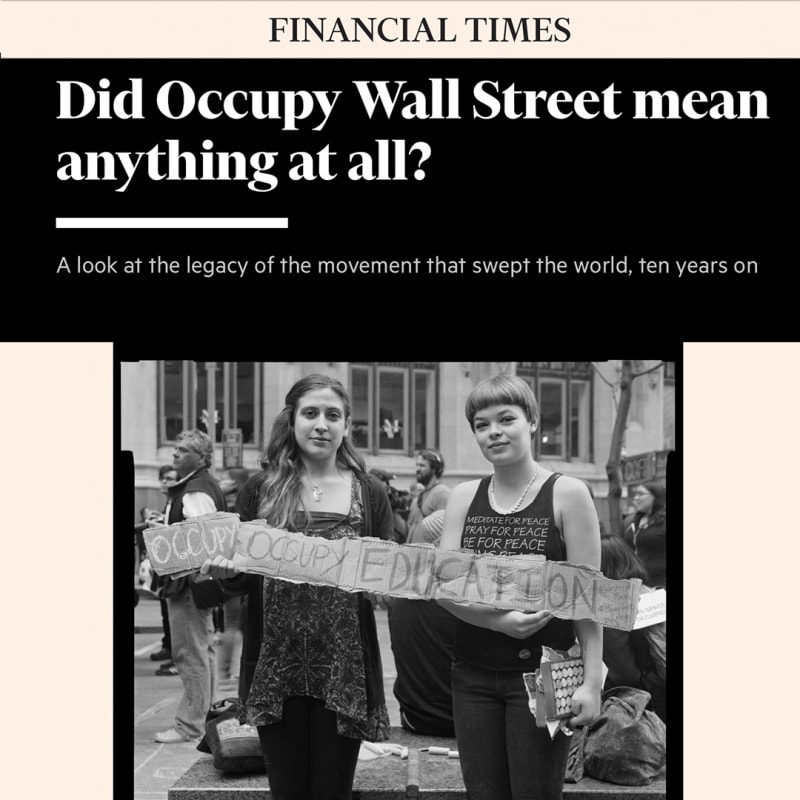A look at the legacy of the movement that swept the world, ten years on
Around noon on September 24 2011, a young black man named Robert Stephens fell to his knees in the middle of the road outside Chase Bank headquarters on Liberty Street,
New York City. Wearing a white fleece and black-rimmed glasses, Stephens pointed at the Chase building and wailed: “That’s the bank that took my parents’ home.”
Like so many in the wake of the 2008 financial crisis, his family had lost their house to the bank. As Stephens continued to scream from the pavement, police officers circled. “I’m not moving. I’m not gonna be quiet!” His voice was growing hoarse. Tears ran down his face. That morning, Stephens had joined a march from Occupy Wall Street’s week-old encampment at Zuccotti Park towards the New York Stock Exchange, although police and metal barricades had prevented them from entering Wall Street. Demonstrators cavorted down the street chanting, “They got bailed out, we got sold out.” Now a crowd was forming around Stephens, with several people shouting along with him.
Marisa Holmes, an activist and film-maker who was involved with planning Occupy Wall Street, had come over to shoot Stephens’ emotional protest after hearing the commotion. As the police pounced on Stephens, Holmes refused to stop filming. She found herself being jostled by officers. The police decided to arrest her too. Before they could confiscate her video camera, Holmes hurled it into the crowd. A moment later, police had wrestled her to the ground, the camera still rolling.

